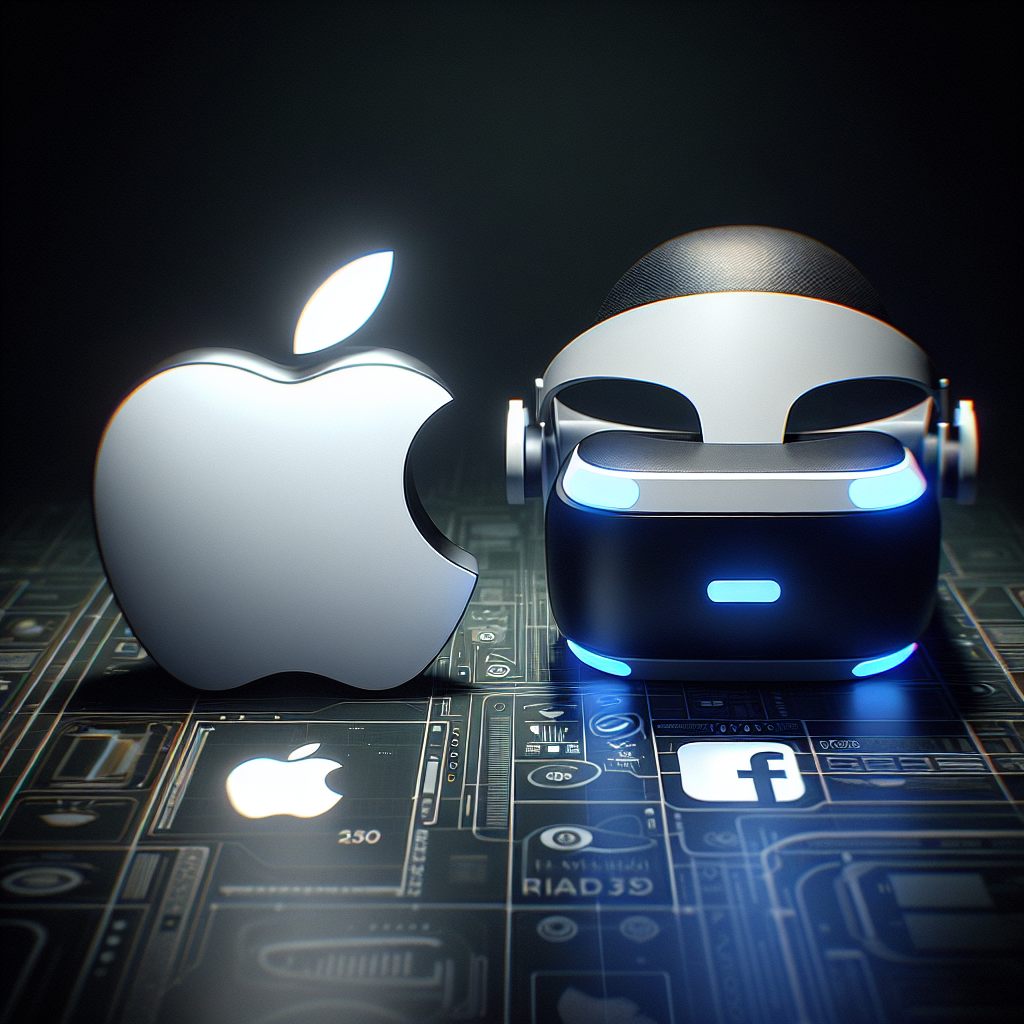Apple Vision Pro vs. Meta Quest 3: A Deep Dive into the Future of VR and Spatial Computing
In the expanding universe of virtual reality (VR) and augmented reality (AR), two titans have emerged, ready to do battle for the hearts, minds, and wallets of tech enthusiasts everywhere. On one side, we have the sleek, futuristic, and decidedly premium Apple Vision Pro. On the other, the Meta Quest 3 stands as a testament to accessibility, versatility, and a vision for VR that's as much about the community as it is about the tech. Let's dive headfirst into this digital odyssey and explore just what sets these two behemoths apart.
Before we delve deeper, let's acknowledge our primary source of inspiration and insights:
The Apple Vision Pro: A Leap into Luxurious Spatial Computing
Apple's entry into the VR/AR world isn't just a toe-dip; it's a swan dive into the deep end of the pool. The Apple Vision Pro is less a VR headset and more a herald of a new era Apple dubs "spatial computing." It’s a bold, ambitious, and - dare we say - audacious move that typifies Apple's approach to new markets: enter late, but enter luxe.
The Quest for Innovation
Apple's device is essentially an iPad for your face, but to call it just that would be to undersell its ambition. What the Vision Pro brings to the table is a finely tuned symphony of technology and design, promising unprecedented levels of integration and immersion. From eye-tracking capabilities that feel like they're borrowed from a sci-fi novel to finger gestures that replace traditional controllers, Apple is redefining interaction within digital spaces.
But innovation comes at a price - a steep price. With a cost that makes even seasoned Apple aficionados wince, the Vision Pro positions itself as a niche luxury product. It’s a device for those who want the first taste of the future, budget be damned.
A Look at the Competition: Meta Quest 3
Enter the Meta Quest 3, a device that speaks a different language. Where Apple whispers luxury, Meta speaks accessibility. The Quest 3 is the people's VR headset, offering a compelling package of features at a price point that's hard to argue with. It's the democratization of VR, a device that says, "Yes, the future is here, and it's for everyone."
The Quest 3 might not offer the same pioneering gesture and eye-tracking features as the Vision Pro, but it stands tall as a beacon of value. With robust PC connectivity, standalone functionality, and a growing ecosystem of games and apps, it presents a compelling case for anyone looking to dip their toes into VR.
Comparing Apples and Quests
So, how do these two devices stack up against each other? It's the classic tale of luxury versus accessibility, of pioneering tech versus established, community-driven innovation. The Vision Pro offers a glimpse into a future where your digital and physical realities meld seamlessly, but it does so with a price tag that's as eye-watering as its tech is eye-catching.
The Quest 3, on the other hand, offers an accessible, versatile gateway into VR. It might lack the high-end features of its Apple competitor, but it makes up for it in versatility, price, and the sheer breadth of its ecosystem.
The Verdict: Which Headset Reigns Supreme?
The truth? It's not a simple question of which device is better. It's a question of what you value, what you envision for your digital future, and, quite frankly, how deep your pockets are.
The Apple Vision Pro is a marvel of technology, a glimpse into a future that's almost within reach. But it's a future that comes with a significant cost barrier, making it a product for the few, not the many.
The Meta Quest 3, meanwhile, represents a different vision altogether – one of inclusivity, of VR for all. It brings the future to your living room without asking for your life savings in return.
For those who prioritize cutting-edge technology and have the budget to match, the Vision Pro is an unparalleled choice. But for those looking for an entry point into VR that offers great value, community support, and a broad range of experiences, the Quest 3 is the clear winner.
Looking Ahead: The Future of VR and Spatial Computing
As we stand on the brink of this new digital frontier, one thing is clear: the landscape of VR and spatial computing is more exciting than ever. Companies like Apple and Meta are pushing the boundaries of what's possible, driving innovation that will redefine our relationship with technology.
The battle between the Apple Vision Pro and the Meta Quest 3 is more than just a competition between devices; it's a glimpse into the diverging paths of the future of VR. One path leads towards a high-end, luxury experience that blurs the lines between the digital and physical. The other towards an accessible, community-driven future where VR is for everyone.
Whichever path you choose, one thing is certain: we're on the cusp of a revolution in how we interact with digital worlds. And that, in itself, is a journey worth embarking on.
For further reading on the topic of VR and its potential impact on society, consider exploring additional resources:
In the end, whether you lean towards the lavish allure of the Apple Vision Pro or the democratic ethos of the Meta Quest 3, the horizon of VR and spatial computing is undeniably vibrant, promising a future where our digital and physical realities are intertwined more seamlessly than ever before.
